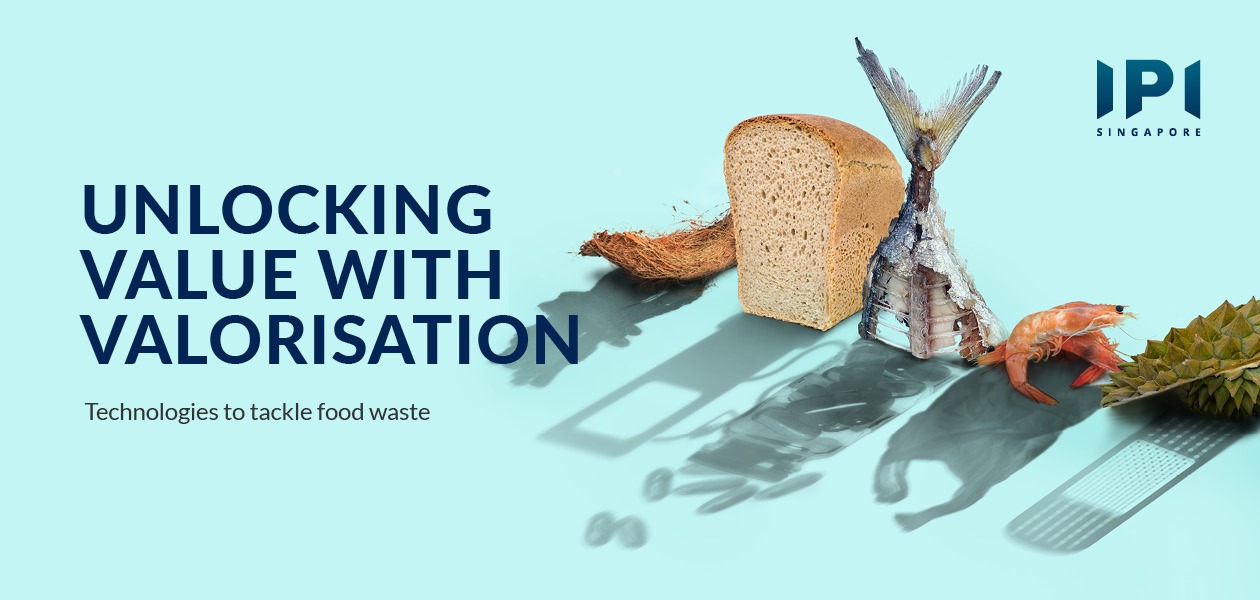Food waste valorisation: challenges and opportunities
Novel valorisation technologies could help industrial food producers reduce waste and turn it into high-value products. Download our white paper to find out more.
Securing enough food has been a prerequisite for mankind’s survival. Although humanity has long evolved from hunting and gathering to agriculture to widespread urbanisation, the need for food has remained the same or even intensified.
While entire industries are now committed to producing and distributing food for an ever-growing population, global hunger still exists. Furthermore, erratic environmental conditions caused by climate change mean that food insecurity is a looming challenge even for those who can currently afford to eat.
It might be surprising, then, to find out that more than 1.6 billion tonnes of food—a third of all food produced—is wasted or lost each year. While this waste is often associated with the food thrown away by consumers, most of it actually occurs right at the beginning of the supply chain, with production accounting for 32% of total food loss.
The rise of food waste alongside an increased social and environmental responsibility among businesses is building the market for food valorisation innovation. Valorisation presents producers and manufacturers the opportunity to not only reduce waste but to transform it into high-value products that meet emerging market demands, such as fuels, bioplastics and pharmaceuticals.
In Unlocking Value with Valorisation: Technologies to Tackle Food Waste white paper by IPI, we analysed the current food waste market and its existing technologies to provide insights on the opportunities in the sector.
A global movement
Around the world, companies are coming together to address the issue of food waste and search for greener and more cost-effective food waste management. The Coalition of Action on Food Waste, for example, was established in 2020 with the ambitious goal of halving food loss at the retail and consumer levels by 2030. Bringing together 14 of the world’s largest food retailers and manufacturers, the coalition encourages companies to measure, report and manage their food waste to increase transparency and accountability.
This commitment is becoming a publicly mandated responsibility as well, as governments worldwide implement legislation to reduce and recycle food waste. For instance, the European Union requires all member countries to reduce and monitor food waste in every phase of the supply chain. Similarly, Singapore’s 2019 Resource Sustainability Act includes food waste management as a crucial part towards transitioning to a Zero Waste Economy. A Food Waste Fund has even been created to subsidise the implementation of food waste solutions for organisations in Singapore.
With annual food waste is estimated to amount to 2.1 billion tonnes by 2030, both public and private sectors are called upon to enact sustainable food waste reduction policies today.
Greater possibilities with emerging technologies
While reducing wastage is a top priority, food waste is unlikely to be eliminated completely, especially for fresh produce. Traditional waste management systems revolve around recycling post-consumer waste, either from surplus or spoiled food. However, due to the varied composition and contamination levels of leftover food waste, and the limitations of existing technology in dealing with heterogeneous inputs, the end products are often of low value, such as fertilisers and animal feed.
Waste as a byproduct of industrial food production, on the other hand, is fairly homogenous and predictable in material, volume and site of production, making it the prime resource for valorisation. Not only does valorisation provide a way for companies to comply with increasingly mandated waste reduction requirements, it also makes business sense as a profitable endeavour.
Our survey of the technology landscape has found that treatment methods have advanced to make waste streams lucrative for businesses. Newer valorisation technologies allow the extraction of high-value bioactive compounds which are widely used in pharmaceuticals, nutraceuticals, cosmetics and food. Additionally, there is a shift towards eco-friendly and sustainable design in these methods. Existing commercially available processes usually involve toxic chemicals and produce a significant amount of waste, but newer methods use natural chemicals and aim to generate zero waste.
Turning food waste on its head
As new food valorisation technologies emerge, food loss from production that was once disposed immediately or processed into low-value products is now becoming a valuable resource. Food producers and manufacturers can consult with experts and existing technology providers to develop a valorisation method best suited to their regulatory requirements, as well as explore ways to maximise profit from the development of new products.
To further understand the current opportunities, challenges and trends in the food waste market, or find out more about novel food valorisation technologies available today, download the white paper below.


